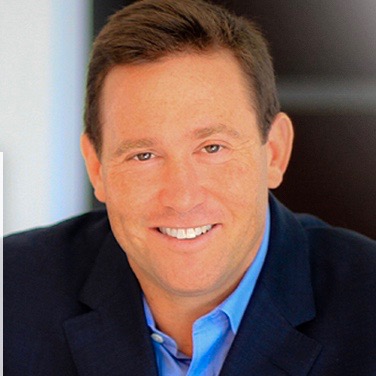In the spotlight: Jon Gordon, Author, “The Power of Positive Leadership”
Any business leader will tell you that running a world-class organization is no easy feat. It’s challenging to work toward a vision and create a positive future for you and your team, especially since you are guaranteed to face all kinds of challenges, adversity, negativity, and tests along the way. But in the face of these obstacles, your attitude makes all the difference in the culture and success of your organization. Best-selling author Jon Gordon advises you to choose very carefully.
“Pessimists don’t change the world,” says Gordon, author of the new book The Power of Positive Leadership: How and Why Positive Leaders Transform Teams and Organizations and Change the World (Wiley, April 2017). “Throughout history, we see that it’s the optimists, the believers, the dreamers, the doers, and the positive leaders who change the world. The good news is, even if you’re the biggest pessimist you know, you can learn to change your outlook and that will change your life and make you a much stronger leader.”
Research clearly supports the connection between a positive attitude and success in terms of individuals and organizations. For example, Daniel Goleman’s research demonstrates that positive teams perform at higher levels than negative teams.
Also, according to Wayne Baker, research he and Robert Cross conducted shows that “the more you energize people in your workplace, the higher your work performance.” Baker says that this occurs because people want to be around you. You attract talent, and people are more likely to devote their discretionary time to your projects. They’ll offer new ideas, information, and opportunities to you before others. The opposite is also true. If you de-energize others, people won’t go out of their way to work with or help you.
Finally, a Gallup study estimates that negativity costs the economy $250-300 billion a year and affects the morale, performance, and productivity of teams.
“Optimism in your company starts with you,” says Gordon. “If you don’t have it, you can’t share it. I am not a naturally positive person, but I am proof that you can learn to be positive. I think of myself as a pessimistic optimist. I will always gravitate, naturally, toward the negative. The good news is that pessimism is just a state of mind. It’s not permanent. You can change it, and you definitely should. I’ve worked really hard over the years, and it’s changed my marriage, my relationship with my children, my life, and my career for the better.”
Keep reading for Gordon’s seven tips to make the life- and business-changing transformation from a negative leader to a positive leader.
Stop complaining and blaming
If you’re complaining, you’re not leading, says Gordon. Leaders don’t complain. They focus on solutions. They identify problems and look to solve them in order to create a better future for all. Positive leaders don’t attack people. They attack problems.
Don’t focus on where you are; focus on where you’re going
Lead your team with optimism and vision. Regardless of the circumstances, keep pointing others toward a positive future.
“Even when Clemson football lost the national championship in 2015, head coach Dabo Swinney believed they would return the following year and kept pointing his team toward a positive future,” says Gordon. “He didn’t see the loss as a challenge. He saw an opportunity to come back and win it the following year—and that’s what they did.”
Lead with love instead of fear
Fear is draining; love is sustaining. Fear divides; love unites. Gordon explains that the key to leading without fear is to provide both love and accountability.
“Negative leaders provide a lot of fear and accountability, but no love,” says Gordon. “If your team knows you love them, they will allow you to challenge them. But love must come first. Former CEO Alan Mulally turned around Ford with both love and accountability. He said you have to ‘love ’em up,’ and you have to hold them accountable to the process, principles, and plan. He was able to save Ford and help the economy with a lot of love and a lot of accountability.”
Be demanding without being demeaning
Many people think positive leaders are Pollyanna positive who just smile all the time and don’t care about results. This couldn’t be further from the truth. Positive leaders pursue excellence. They believe in a brighter future so they take the necessary actions with excellence to create it.
“Positive leaders are demanding but aren’t demeaning,” says Gordon. “They lift others up in order to accomplish their goals, rather than tear them down. They don’t talk at you—they walk and run with you.”
Connect one-on-one
“The greatest leaders connect with those they lead,” says Gordon. “Dave Roberts, manager for the Los Angeles Dodgers, is a great example. One day I witnessed a player walk in and say hello. Dave got up and gave the player a big bear hug for about five seconds—the kind of hug that a dad would give to his son. I told Dave how great it was that he would give his player a hug like that. He said, ‘I do it each day and he often stops by to talk about life and challenges and whatever is on his mind.’
“A few weeks later, while watching the Dodgers play the Nationals in the postseason, I watched in amazement as this player hit homeruns in Games 4 and 5 to help the Dodgers advance,” adds Gordon. “It was as if I had a front-row seat to see the impact of what happens when a coach makes the time to pour love and support into one of his players.”
Create positive change inside-out
“Don’t let your circumstances and outside events define you,” says Gordon. “You define your circumstances with your vision, beliefs, and action. Many leaders believe they are victims of circumstance. They have an external locus of control. But positive leaders believe they can influence events and outcomes by the way they think and act.
Coach Donna Orender is a great example. When she served as commissioner of the WNBA, she saw a lot of negativity amongst those in the corporate offices. There was a feeling that no one cared about women’s basketball and a lack of belief that the organization could be successful. But Orender saw the passion and optimism in the coaches and players, and she believed in them and in the future of the WNBA. She began building an optimistic belief system and inspired her colleagues to believe in the WNBA’s future as well. By focusing on one success at a time, she helped create a new reality for herself and changed the organization from the inside-out.
“I saw the same optimistic attitude and leadership in Silicon Valley during the Great Recession,” says Gordon. “While the rest of the country was going through the downturn, the people who lead and work for the companies in Silicon Valley refused to participate in the recession. They were too busy trying to change the world. They were surrounded by a bubble of optimism.”
Encourage instead of discourage
Positive leaders are also positive communicators in such a way that they make people around them better and feel encouraged instead of hopeless or discouraged. They also spread positive gossip, listen to and welcome new ideas, and give genuine smiles when they speak. Finally, they are great encouragers who uplift the people around them and instill the belief that success is possible.
“One of my favorite phrases comes from the original Olympic ‘Dream Team’ and Detroit Pistons coaches Chuck Daly and Brendan Suhr,” says Gordon. “It is ‘shout praise, whisper criticism.’ Shout praise means recognizing someone in front of their peers, and whisper criticism means coaching them to get better. Both build better people and teams.”
“There is a power associated with positive leadership,” concludes Gordon. “Even if you naturally lean toward a negative outlook, making a few changes can inspire momentous change in your own career success as well as in the success of your team. When you lead with optimism and share positive energy with others, you will transform the negativity that too often sabotages teams and organizations. Your new positive attitude will at last allow you to take on the battle, overcome the negativity, face the adversity, and keep moving forward. The best really is yet to come.”

Jon Gordon‘s newest book is “The Power of Positive Leadership: How and Why Positive Leaders Transform Teams and Organizations and Change the World.” His best-selling books and talks have inspired readers and audiences around the world. His principles have been put to the test by numerous NFL, NBA, and MLB coaches and teams, Fortune 500 companies, school districts, hospitals, and non-profits.







